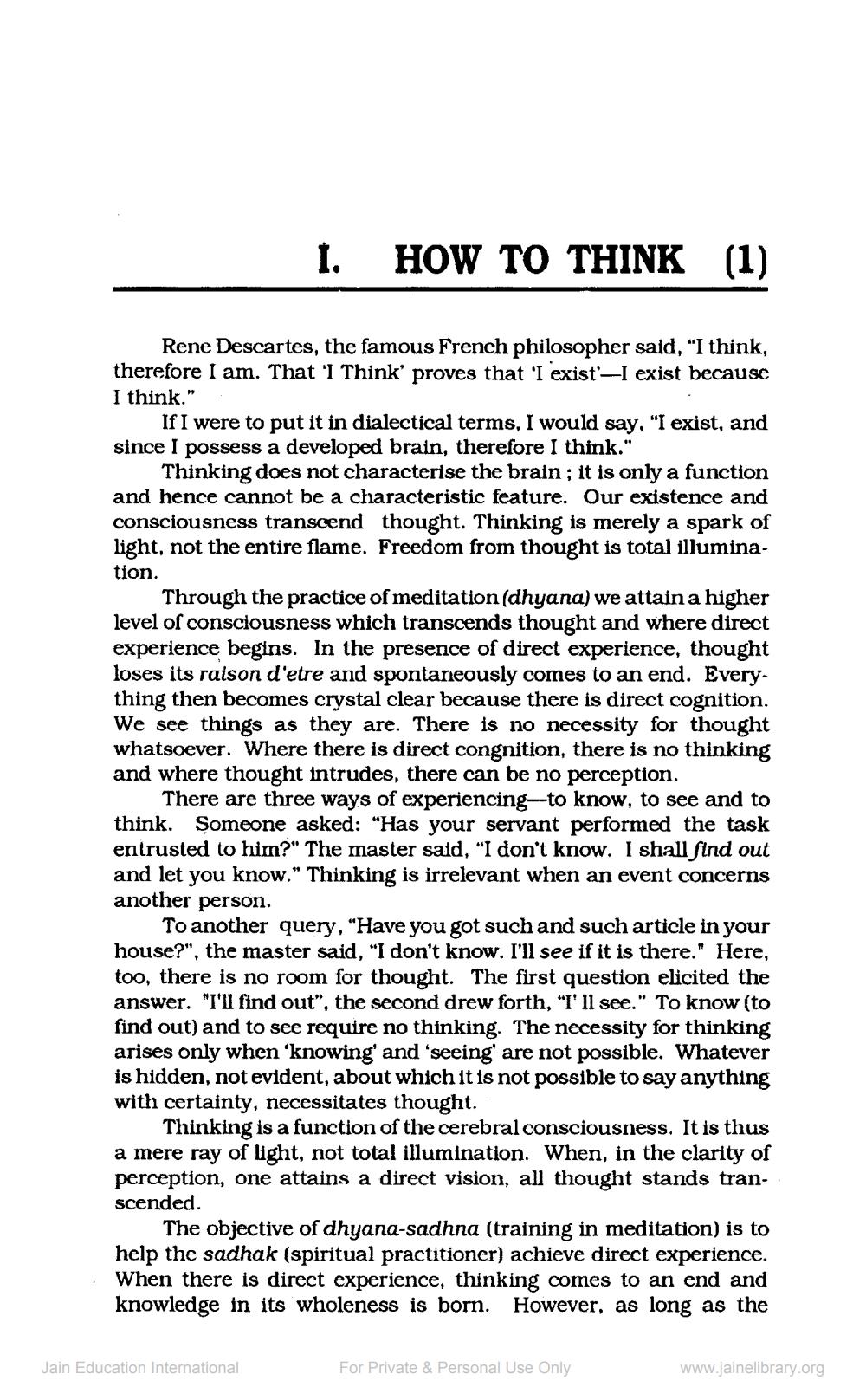________________
1.
HOW TO THINK (1)
Rene Descartes, the famous French philosopher said, "I think, therefore I am. That 'I Think proves that 'I exist-I exist because I think."
If I were to put it in dialectical terms, I would say, "I exist, and since I possess a developed brain, therefore I think."
Thinking does not characterise the brain; it is only a function and hence cannot be a characteristic feature. Our existence and consciousness transcend thought. Thinking is merely a spark of light, not the entire flame. Freedom from thought is total illumination.
Through the practice of meditation(dhyana) we attain a higher level of consciousness which transcends thought and where direct experience begins. In the presence of direct experience, thought loses its raison d'etre and spontaneously comes to an end. Everything then becomes crystal clear because there is direct cognition. We see things as they are. There is no necessity for thought whatsoever. Where there is direct congnition, there is no thinking and where thought intrudes, there can be no perception.
There are three ways of experiencing-to know, to see and to think. Someone asked: "Has your servant performed the task entrusted to him?" The master said, "I don't know. I shall find out and let you know." Thinking is irrelevant when an event concerns another person.
To another query, "Have you got such and such article in your house?", the master said, "I don't know. I'll see if it is there." Here, too, there is no room for thought. The first question elicited the answer. "I'll find out", the second drew forth, "I'll see." To know (to find out) and to see require no thinking. The necessity for thinking arises only when 'knowing' and 'seeing' are not possible. Whatever is hidden, not evident, about which it is not possible to say anything with certainty, necessitates thought.
Thinking is a function of the cerebral consciousness. It is thus a mere ray of light, not total illumination. When, in the clarity of perception, one attains a direct vision, all thought stands transcended.
The objective of dhyana-sadhna (training in meditation) is to help the sadhak (spiritual practitioner) achieve direct experience. · When there is direct experience, thinking comes to an end and
knowledge in its wholeness is born. However, as long as the
Jain Education International
For Private & Personal Use Only
www.jainelibrary.org




